Hello everyone!
I presented my 5 key takeaways and reflection in a slide presentation. I had some fun creating this one and presenting my “thoughts!” Hope you enjoy!
Hello everyone!
I presented my 5 key takeaways and reflection in a slide presentation. I had some fun creating this one and presenting my “thoughts!” Hope you enjoy!
Hello everyone!
My inspiration report mainly focuses on emerging technology trends, specifically video games and consoles being available to play at public libraries. I also touch on on infinite learning and power of stories a little. As someone who loves video games, it was really fun to see how other public libraries provide accessibility to a variety of games to play!
Here is my presentation:
One of my biggest takeaways from exploring the “Learning Everywhere” module was that libraries are in a constant state of learning about new trends and experimenting with what trends would work well with their community. By doing this, library space and service will always evolve (Stephens, 2014) and may grow into something amazing, and adds unreplaceable value to the community. Some ways librarians can remain aware of the changing information environments:
Librarians need to look out for how information is being found and received in a new way, especially in these days when information can be easily misled or faked.
Some libraries are sharing information in a more immersive way such as VR, augmented reality, or even creating a “sensory playground” (Public Libraries Connect, 2018) where kids can explore their senses by playing sensory games and toys. By making more interactive environments (Greenwalt, 2013) in the library, patrons will become more connected to not only information, but their community and library as well.
Librarians can also survey their users and ask what they would like to see more of in the library.
I also found this video dating back to when San Jose Public libraries were starting to offer VR events. Here’s an event page describing their service.
I think this is one of the things I am excited about most for my future career, experimenting with different ideas and trends that could make the library more valuable for its community.
References
Greenwalt, R.T. (2013). Embracing the long game. https://publiclibrariesonline.org/2013/02/embracing/
Mercury News. (2017, August 12). Virtual reality makes its way to libraries. [YouTube Video]. https://www.youtube.com/watch?v=riEK3vaLGFU
San Jose Public Library. (2025). Virtual Reality: Exploration & Experiences. https://sjpl.bibliocommons.com/events/676de63f59163a2f0036fb2c
Stephens, M. (2014). YLibrary:… Infinite Learning. https://www.dropbox.com/scl/fi/4zt1yliwb2ffzr8euix2p/YLibraryInfiniteLearning.pdf?rlkey=m0v6lkd43ufilkp5aktawhlpr&e=1&dl=0
Public libraries connect. (2018). SL Blogs- Sensory Spaces. https://plconnect.slq.qld.gov.au/blog/check-out-marsden-librarys-sensory-space
Libraries can connect their patrons and community together by being a place where ideas are constantly exchanged, (Wentz, 2013). Providing journal prompts can be a great way to inspire patrons to create their own stories and find a place to write them.
Adults can be given creative or self-reflective prompts on the walls and either write about them at the library, or take pictures of them to write about them later. They can also bring their own journals to the library to write down their prompt answers.
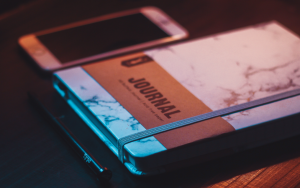
Kids and teens can have wild, creative prompts where they can revisit the imaginative world of their favorite stories. They can write about the books they wish they lived in, draw how they would look like as a character in the book, and of course have them think about their own stories they could write about.
Examples of a creative prompt could be: What book do you wish had been only a stand alone, or what book do you think needs a sequel? Pick one (or both) and write about how that book could have been a stand alone, or what the sequel would be about for the other book.
Example of a self-reflective Prompt- Write about some challenges you faced this week?
Example of “Free Thoughts”- Write about whatever you want!
More ideas can be found here.
Bingo Journal- Provide a Bingo sheet with each square having one word users can try to use in their prompts. If users do manage to get a “Bingo,” provide some mini prizes such as stationary supplies of any kind (pens, a journal, coupons for local restaurants, bookmarks).
Reference:
San Antonio Public Library. (2022). Journal Ideas LibGuide. https://guides.mysapl.org/journal
Wentz, E. (2013, April 26). The human library: Sharing the community with itself. https://publiclibrariesonline.org/2013/04/human_librar/
I found the idea of libraries creating more outdoor and nature related programs interesting so I decided to look into it more and find the positives and ideas libraries have been trying lately.
Libraries could follow the Nature Library project Anythink libraries worked on with the City of Thornton. As mentioned in the article, these outdoor programs allow people to focus on the health and wellness of their community as well as allow them to appreciate the fresh air and big space the great outdoors has to offer.
Libraries can also bring nature inside the library (Public Awareness and Advocacy Committee, 2022) by bringing in plants or nature elements to their patrons, and designing activities observing them. One of the ideas suggested by this article is seed exploration where you can take seeds from different fruits and have kids match them with the fruit they came from.
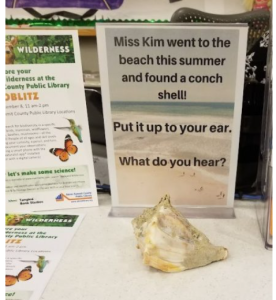
The library is becoming a space where kids, teens, and adults can move around, explore, and get some fresh air. The library can be a great place to be informed about the wonders of nature and interact with the environment. I also thought about how librarians can take advantage of this opportunity to display books about nature whenever outdoor events and programs occur. Having more outdoor activities allows people to move around more and bringing nature inside allows people to interact with nature more. Either way, patrons will become more connected with the outdoors, even if they’re inside!
References:
Anythink Libraries. Anythink announces Nature library in partnership with City of Thornton.https://www.anythinklibraries.org/news-item/anythink-nature-library?fbclid=IwAR2DgO-k8nU6kNUODo7vTlRXKiEiYSoSeQMC8Aq0QnoLMZoT3d-QKpbSl5M
Public Awareness and Advocacy Committee. (2022, October 27). It’s only natural! Bringing the outdoors in to the library. ALSC Blog. https://www.alsc.ala.org/blog/2022/10/its-only-natural-bringing-the-outdoors-in-to-the-library/
Hello everyone! The innovative idea I came up with is about creating a program public libraries can do to inspire kids and teens to create fun DIY crafts, both hands-on or digital.
Here’s the link to my presentation:
As Fister’s article stated, academic libraries are working on more active ways to connect students to information that will facilitate scholarly conversation (2016) but not just by teaching them how to evaluate information, but how they can create and communicate information to their peers and hone skills for life after college.
The Ho Sik Yee Library in Hong Metropolitan University offers a DIY studio service for students that lets them make their own digital videos.
U.C. Berkeley offers a DIY Media service for instructors to use a recording space to make audio or video content that they can use to teach their classes. They are also working on a program to let undergraduate students use these services as well.
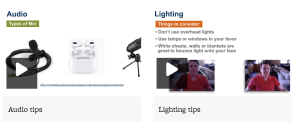
The University of Washington offers not only offers online workshops for students to hone their research skills, they offer many study spaces and rooms for conference meetings.
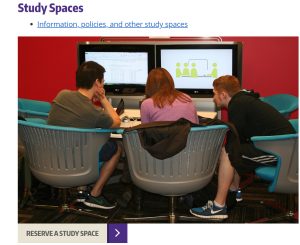
These types of services and makerspaces are why I’m excited to work in academic libraries, because of the many innovative services librarians are engaging in.
It’s about how space in the academic library can be utilized to create a hyperconnected environment. By having more space where students and instructors can meet together and be as innovative as possible, they are able to become more connected with each other and the work they long to do after graduation.
References
Fister, B. (2016). Reframing Libraries. Inside Higher Ed. https://www.insidehighered.com/blogs/library-babel-fish/reframing-libraries
Hong Kong Metropolitan University. (2025). DIY Studio – Library. https://www.hkmu.edu.hk/lib/using-the-library/spaces-for-different-needs/diy-studio/
University of Berkley. (2025). DIY Media. Research, Teaching, & Learning. https://rtl.berkeley.edu/services-programs/diy-media
University of Washington. (2025). Libraries Workshops. UW Libraries. https://lib.uw.edu/services/uwcontinuumcollege/libraries-workshops-in-canvas/
University of Washington. (2025). Study and Meeting Spaces. UW Libraries. https://lib.uw.edu/services/spaces/
What has been standing out to me the most, when reading about hyperlinked communities, is how libraries are using technology to digitize local collections such as the one shown in the Oak Park Public Library video, along with building exhibit displays.
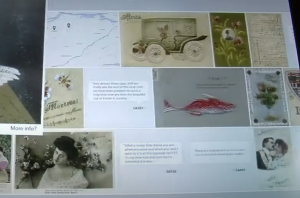
These collections may increase in the future, and encourage patrons to learn more about their community, connecting them to the history of the town, region, or city they live in. These collections of course, may take awhile to build, and the help of community partnerships and patrons could really expand the digitized local collections, almost transforming the library into a local museum as well as a place to find information. The contribution of such partnerships allows the community to maintain a hyperlinked community as well.
The expansion of interactive digitized collections and exhibits in the library allow more interactive exploration to be done inside the library. Not only do these digitized collections exist online, but can be presented in person as well. The U.C. Davis Library, while not presenting them digitally, also has exhibits displayed inside the library for people to get a closer look at their university’s special collections and connect with the new information being displayed every few months.
I think more libraries should take this approach, but not just present information digitally or exhibit displays, but find ways to connect them with people. It’s the interactive design of these library services that may draw the attention of more patrons to visit the library.
References
Jaap v.d. Geer. (n.d.). Oak Park Public Library. IdeaBox Collections: Local Stories. [YouTube]. https://www.youtube.com/watch?v=WAfw2logFJM
U.C. Davis Library. (2025). Exhibits in the Library. U.C. Davis. https://library.ucdavis.edu/exhibits/exhibits-in-the-library/
Libraries are moving away from the “no talking” rules in the library and making way for a more communal, social space where sharing information out loud is encouraged.
Expanding participatory service allows the library to be more connected with others, the librarians, and even information. Booth’s article “People and the UTS library” brings up this notion of libraries challenging the norm of library practices (2013) and reimagining the library filled with new and developing technologies. Libraries are becoming a supportive and welcoming community space, encouraging users to voice their opinions on any old or new services and programs libraries have to offer. These developing technology services help people connect with each other and information (Stephens, 2010) which helps the hyperlinked library model grow and flourish in other libraries planning or starting to expand participatory services.
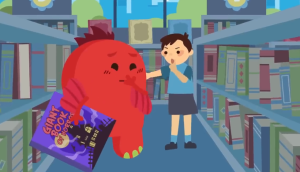
↓
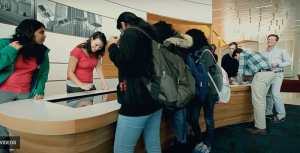
Public libraries aren’t the only libraries evolving into loud libraries, school libraries are transforming into their own classrooms as well. Matthews’ article “The unquiet library has high schoolers geeked,” explains the students’ experience with being able to use their phones in the library to learn their lesson of the day has enhanced their library experience, along with encouraging classroom engagement by syncing up their phones with the smartboard. Many schools would usually be against the usage of phones at school, but this school library has managed to use phone technology to the students’ advantage, (Matthews, 2010) instead of it being a distraction to the kids’ education.
Academic libraries are following this trend as well, creating more space for students to work with friends and classmates, transforming study spaces into aesthetically pleasing areas, and constructing more space for students to relax. Academic libraries show support to their students by taking care of their mental (Cox, 2022) and physical health. If they need space to collaborate and innovate, simply hang out with friends, walk, or eat, academic libraries will provide the services necessary to the student’s success.
MacPherson’s article shares a similar perspective, “noisy is the new normal,” (2023) about the current state of libraries. She states technology has also played a large role in their children’s and adult programs and services, inspiring more creative thinking and noise being made in the library. Many libraries, whether they are public, academic or even school libraries, are supporting “community participation” (Meier, 2022) by creating new programs and services that make the library and, to an extent, people of the community more visible. It is the job of the librarian to help users find information, and the louder they can be, the better.
This aspect of participatory service informs me about the different types of services libraries are offering these days. Socializing in libraries is the new normal. Designing services that will benefit the library’s community members and inspire them to make noise in the library will help me be a better information professional. Whatever information users have to share, whether it’s innovation, business, academic, or even feedback, the librarians are ready to listen.
References:
Booth, M. (2013). People and UTS Library. https://287.hyperlib.sjsu.edu/wp-content/uploads/2014/06/Booth_PeopleUTSLibrary.pdf
Caldwell, K. Should libraries be quiet? ALSC Blog. https://www.alsc.ala.org/blog/2024/04/should-libraries-be-quiet/
Cox, A. (2022). Factors shaping future use and design of academic library space. New Review of Academic Librarianship, 29(1). 33-50. https://doi.org/10.1080/13614533.2022.2039244
NC State. (2013, April 3). NC State University’s James B. Hunt, Jr. Library. [Video]. YouTube. https://www.youtube.com/watch?v=scyQPk6n0xA&t=155s
NLB Singapore. (2019, August 25). Keeping Quiet: Library Etiquette for Children feat. Monsters United. [Video]. YouTube. https://www.youtube.com/watch?v=p2GxIsA5_HA
MacPherson, K. (2023, May 12). It’s okay for Libraries to be loud! Take it from me, a librarian. Washington Post. https://www.washingtonpost.com/books/2023/05/12/noisy-library-defense-essay/
Matthews, B. (2010, June 21). The unquiet library has high-schoolers geeked. American Libraries. https://americanlibrariesmagazine.org/2010/06/21/unquiet-library-has-high-schoolers-geeked/
Meier, A.C. (2022, October 22). Libraries are vital community spaces (and, They need to evolve). Mellon Foundation. https://www.mellon.org/grant-story/libraries-are-vital-community-spaces-and-they-need-to-evolve
Stephens, M. (2010, March 2). The hyperlinked school library: engage, explore, and celebrate. Tame The Web. https://tametheweb.com/2010/03/02/the-hyperlinked-school-library-engage-explore-celebrate/
Hi everyone! My name is Nicole and I am in my 4th semester in the MLIS program. I chose this course because I wanted to learn more about the emerging technology trends happening in the library world. As more libraries adapt to new technology tools, I feel like taking a class like this one will inform me better about what LIS jobs in the future may start to expect from me. And of course, develop new skills to add to my resume. I am very excited about my classes this semester because each of them having something unique to teach me about different jobs I can apply to for the future. I’m most interested in the academic librarianship pathway and would love to work at college libraries, however I am open to other areas that may take me. Nice to meet you all!
Other facts about me: I love to read and my favorite books are the Percy Jackson books, I love Disney (especially love reading about how they make movies and the rides at their parks!) Love watching cooking competitions. Recently got back into playing video games, favorite game is Mario Kart! And my favorite tv shows right now are Gilmore Girls and Succession.